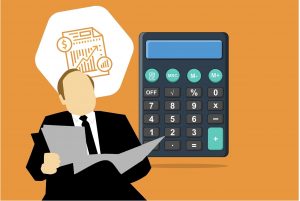
As long as there are businesses, there will be a need for accountants. It is perhaps why a career in accounting continues to attract many bright minds.
Students looking to learn accounting and prep for the CPA exam usually start their journey full of excitement. The responsibility of keeping this excitement alive and turning these students into world-class accountants rests on the shoulders of the tutors and teachers.
Thanks to technology, many of the traditional accounting practices have become outdated. However, the teaching methods haven’t evolved at the same speed. While old-school teaching methods are effective to an extent, you also need to incorporate other strategies into your teaching plans.

Here are a few sample teaching strategies and techniques for accounting courses that will bring the course into the modern world and help students learn better.
1. Use PowerPoint Presentations
Have you heard the saying that a picture is worth a thousand words? Use it to your advantage by providing visual representations of the accounting concepts.
PowerPoint presentations have multiple advantages that make them one of the most popular new means of teaching accounting. The slides can include briefs of the topic, making it easier for students to take notes and revise. You can include images, animations, and videos in the presentation to demonstrate various accounting principles.
If you are used to the traditional techniques for teaching accounting, then presentations are also the easiest way for you to modernize your way of imparting knowledge. They form the bridge between traditional teaching methods and newer techniques.
2. Case Studies
Textbooks can only take you so far. Accounting is a practical subject, and students need to see the real-world applications of various principles to gauge their importance and application.
Case studies help you do just that. These educational tools take real-world data and study them to see how theoretical knowledge can be applied practically. It gives students a chance to truly understand the value of various accounting practices.
Case studies can also be used to foster creativity and critical thinking. You can have discussions on what could have been different or identify more efficient ways of managing the situation. Students will also remember the concepts well when they see them being used practically.
3. Engage in Games
Who doesn’t love games? Certain topics within accounting tend to be less enjoyable by default. But when you learn while playing, the subject ceases to be boring and is imprinted in your memory. Gamifying the learning process can also motivate your students to perform better in the classroom and increase their participation.
Monopoly is a classic game you can use to teach accounting as it contains a lot of monetary transactions. You can divide the class into groups who play Monopoly and record the transactions.
Besides, you will find plenty of online games that include trivia, flashcards, Bingo, etc., that can inject some fun into your accounting course.
4. Run a Real-Life Business
Sometimes, the best way to learn is by getting your hands dirty. To teach students about various costs involved in running a business, have them run their own solo enterprise within the classroom.
You can set up a small shop, such as a sandwich shop that sells one or two different types of sandwiches. Have you students procure the raw materials, let them log all transactions via double-entry book-keeping, consider all the overhead costs, etc.
It is a fun activity that drives home the importance and logic behind various accounting principles. It also helps students understand what practice to apply in various situations. Lessons learned this way stay in their minds for a long duration.
5. Peer Tutoring
One of the biggest drawbacks of a large classroom full of students is that it doesn’t take into account the fact that every student has a different learning curve.
All students learn at a different pace, and it is impossible to account for these variations while teaching a large classroom. You will always end up with students who do not grasp many of the concepts.

Peer tutoring is the best way to tackle this situation. Group the students so that each group has at least one academically advanced student, one average, and one slow learner.
You can then give various assignments to the group that tests their understanding of the concepts taught in that week or a module. The students will bond well and end up helping each other tremendously.
6. Create Personal Budgets
What is the point of learning about finance if you do not apply it in your own life? Have your students create personal budgets as a project. They will have to research the salary trends in the area, the rent, utilities, taxes, and other expenditures. Not only does it reinforce the concepts learned in class, but it also helps them plan better for their future.
Bottom Line
The onus is always on the instructor to keep up with the times. With more and more classes being held online, trainers and teachers need to revamp their teaching methods to keep up with the new medium.
If you want to ensure that your CPA course has the maximum impact on all your students, try one or more of the strategies mentioned above. Keeping things light will refresh your students’ minds and motivate them to learn more.
Want more?
Click for additional articles and resources on leading accounting courses.




